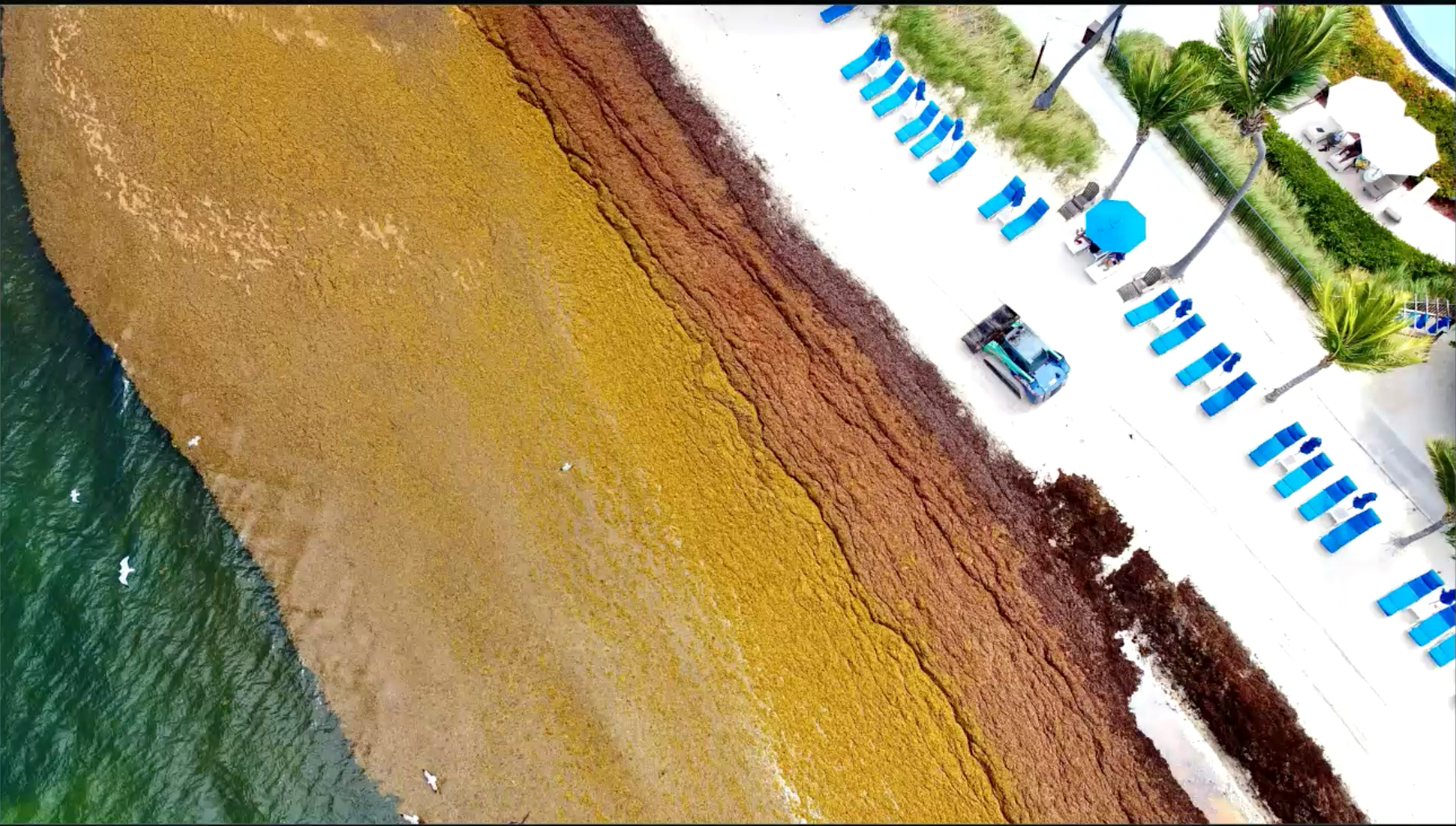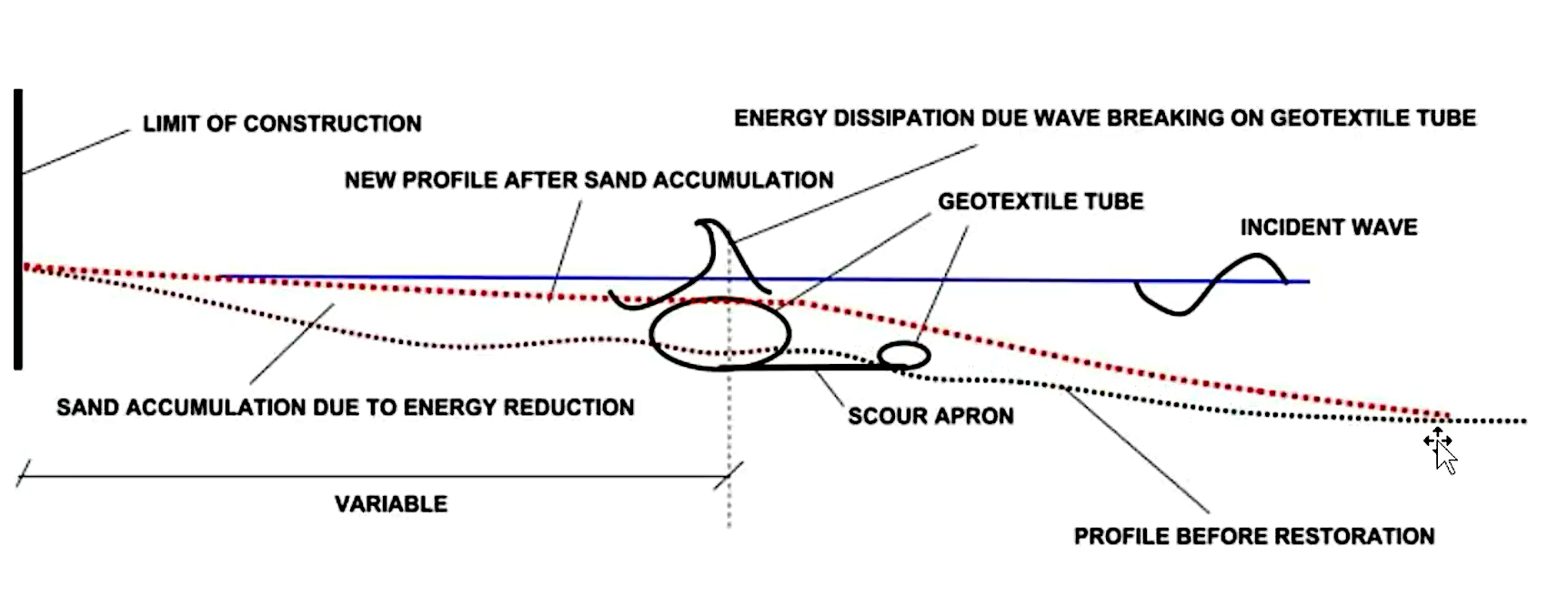
A resort on St. Thomas’ East End asked the Coastal Zone Management division Friday afternoon to approve a plan to sink tubes meant to reverse beach erosion and float a screen to direct seaweed to a single, manageable location.
The hurricanes of 2017 knocked over trees that helped secure the shoreline, causing erosion, which took more trees, said officials from the Ritz-Carlton Destination Club. Undersea barriers, called Geotubes, would act as wave speed bumps, said Amy Claire Dempsey, president of the company Bioimpact, which represented the resort at the meeting.
Dempsey said the tubes, which would sit 15 feet underwater, were sand-colored and filled with sand and could eventually grow algae and coral-like other ocean features. Invisible from the beach, the 51-foot-long, six-foot-wide, three-foot-deep tubes would be spaced 15 feet apart. They’d allow water to come ashore but stop sand from going out, eventually leading to a wider beach like the one before the storms.

Division of Coastal Zone Management Director Marlon Hibbert likened the devices to wearing socks at the beach: Eventually, they’re filled with sand. As it would be the first of its kind application in the U.S. Virgin Islands, Hibbert suggested a detailed study of the plan’s success should it be approved. A site visit was planned to get a better idea of the location.
The Ritz also asked CZM to allow continued use of a sargassum blocking system that shields the majority of the beach, directing most of the seaweed to a single area easy to clean up. Once dry, the sargassum is sent to the Waste Management Authority for disposal.
Researchers across the Caribbean were scrambling to find uses for the naturally occurring seaweed, which has risen in prevalence in recent years due to increased nitrogen runoff from human activity, Dempsey said. Some people are trying to turn it into cloth for clothing, plastic wrap, building materials, fuel, and other products, she said.
The Ritz was hoping to have the erosion mitigation and seaweed controls in place before the height of hurricane season, they said.
Earlier, CZM heard from radio and television station WTJX on a plan to level its hurricane damaged Haypiece Hill facility and build from the ground up. The proposed action would demolish all the existing buildings at the site, including the roof structure, exterior and interior walls, windows, doors, floors, and floor slabs. All building utilities will be removed, piping ductwork, electrical fixtures, and existing building debris down to soil. The plan proposes the removal of all concrete decking, sidewalks, and steps to grade and remove the existing retaining walls and concrete and asphalt parking areas. Demolition would include the removal of the existing diesel fuel and wastewater storage buildings and infrastructure and the complete demolition of the existing satellite antenna equipment, their foundations, and slabs.














